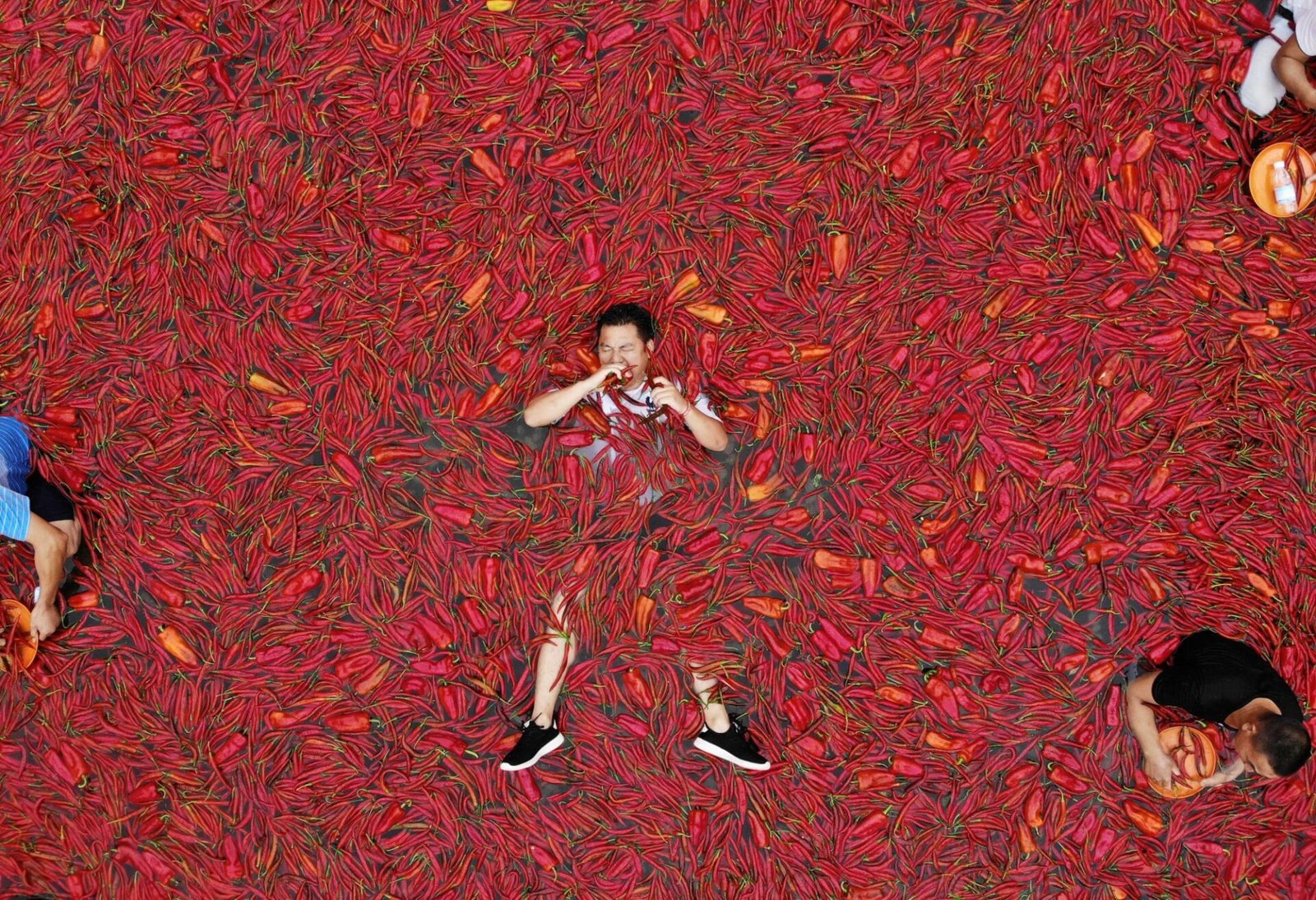In a world where the pursuit of the extraordinary often collides with the quest for internet virality, spicy food challenges have carved a peculiar, albeit sometimes perilous, niche in the global gastronomical scene. These challenges, a tantalizing amalgamation of culinary extremes and the human penchant for risk-taking, have transcended mere local festivities and found a pervasive presence online, particularly among the enthusiastic youth.
Historically, humans have been drawn towards the thrill of daring culinary escapades, exemplified by local chili pepper eating contests and restaurant challenges offering a place on their “wall of fame” for those audacious enough to conquer their spiciest dishes. This eternal flirtation with gastronomical extremes is often propelled by an internal rush, stemming from both a spirit of competition and an inherent proclivity towards risk-taking.
In more recent times, however, the phenomenon of deliberately crafting and marketing products, primarily for the thrill and potential internet fame associated with these spicy challenges, has ignited a new wave of potentially dangerous culinary escapades. Teenagers, especially, find themselves ensnared by these fiery dares due to their pervasive and glamorized presence on social media platforms.
Elisa Trucco, an associate professor of psychology, observes that the glamorization of such challenges on social media often obscures the potential risks and negative consequences that might arise, such as emergent visits to the emergency room or other injuries, beneath a veneer of ‘likes’ and comments which echo social status and popularity.
Similarly, Alexander DePaoli, an associate professor specializing in marketing, elucidates how individuals often willingly subject themselves to discomfort, broadcasting their experiences online for a sense of belonging, akin to traditional offline challenges, exemplified by games of truth or dare. This is exemplified by the YouTube series “Hot Ones”, which attained internet fame by showcasing celebrities confronting their taste buds with increasingly spicy wings.
Restaurants, especially within the United States, have also harnessed the public’s infatuation with spicy challenges. Notable examples include Buffalo Wild Wings’ “Blazin’ Challenge” and the “Hell Challenge” from Wing King in Las Vegas, both of which invite patrons to navigate through a minefield of extra hot sauce-laden wings, under stringent conditions and time constraints.
However, the line between harmless fun and potential danger blurs when tragedy strikes, as is evidenced by the case of Harris Wolobah, a secondary school student, whose family alleges his death on September 1st to be consequent to the One Chip Challenge by Paqui. The challenge entailed consuming a singular, extremely spicy tortilla chip and resisting the consumption of any other food and water for as long as possible.
Despite Wolobah’s tragic death prompting Paqui to withdraw the product from sale and notwithstanding the warnings from health experts about the potential dangers associated with consuming products with high levels of capsaicin, a plethora of similar products persist on store shelves and online platforms. Such products include the Red Hot Reaper’s One Chip Challenge, Blazing Foods’ Death Nut Challenge, and Tube of Terror Challenge, among others.
DePaoli asserts that, while companies venturing into viral marketing isn’t unusual, inviting consumers to ingest something as part of the challenge is, due to the potential liabilities that might arise.
Although these spicy challenges typically bear warnings or labels specifying their intended use for adults, they often permeate into the hands of younger individuals, who may not fully comprehend the inherent risks involved, concludes Trucco.
Consequently, as we navigate through this fiery intersection of culinary extremes and internet challenges, the balance between pursuing thrill and safeguarding well-being becomes ever so critical, underlining the imperative for informed choices and safe practices in these searing adventures.
READ MORE:
